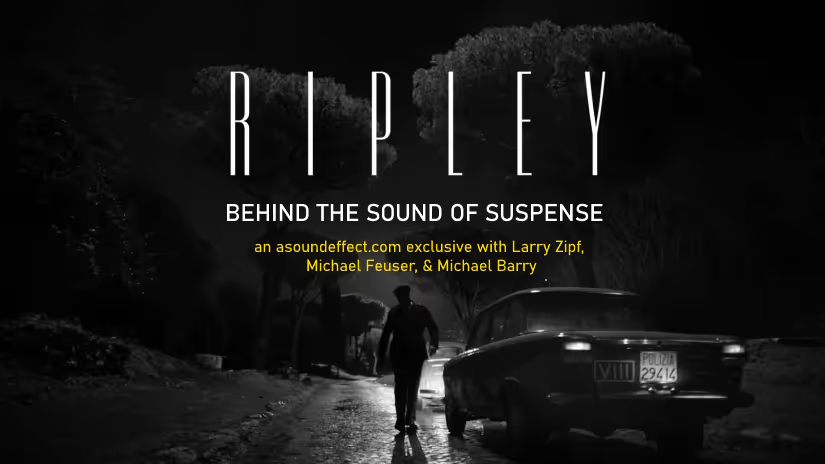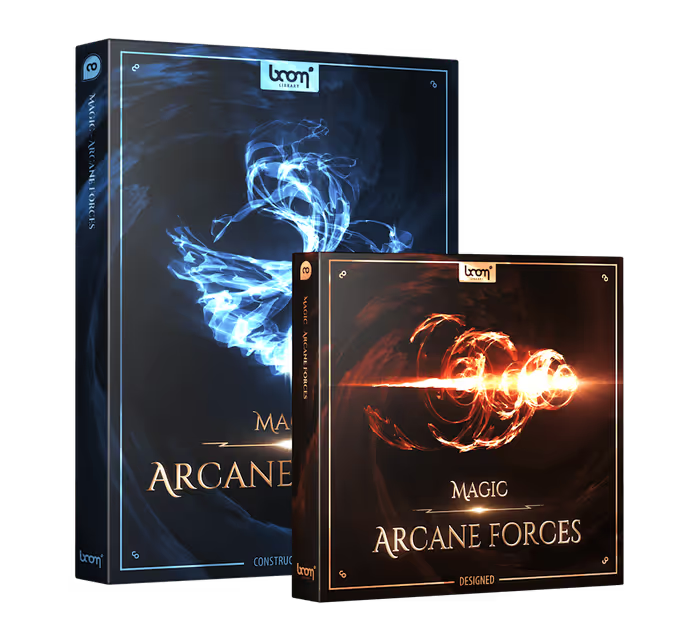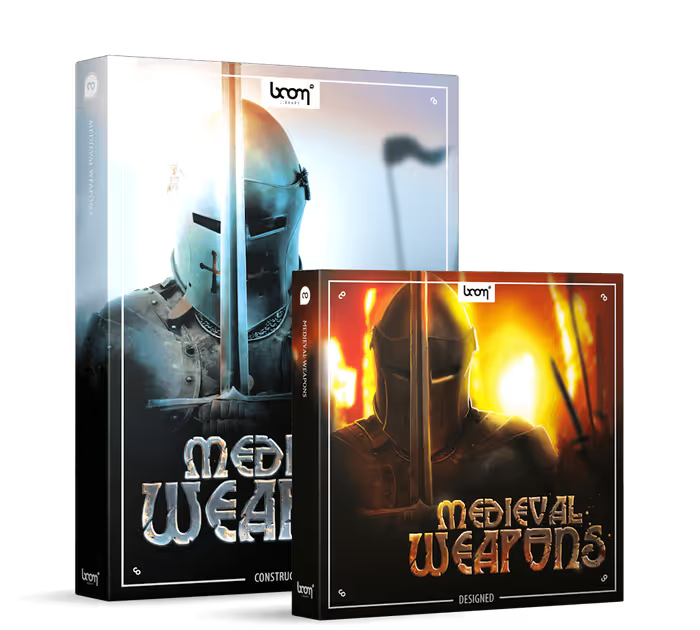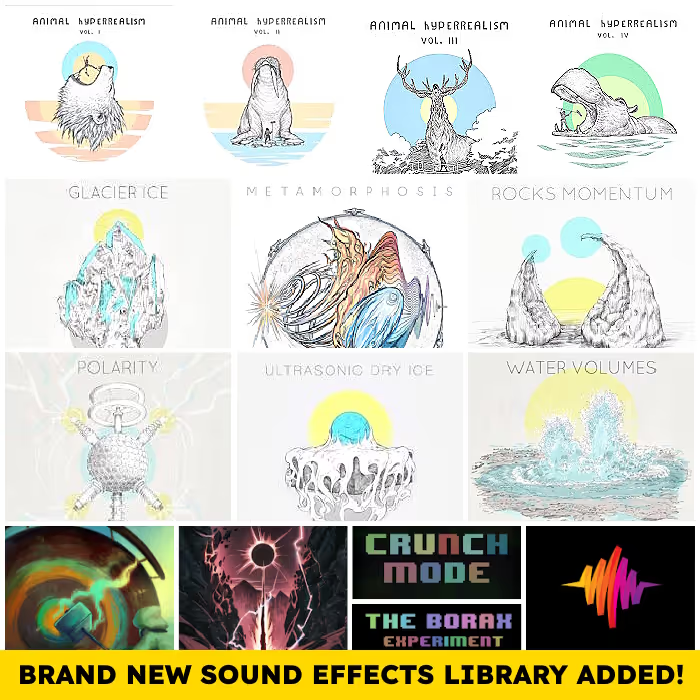Netflix’s neo-noir detective miniseries Ripley is based on Patricia Highsmith’s 1955 crime novel The Talented Mr. Ripley. Set in 1950s Italy, the show follows con artist Tom Ripley, who takes on the identity of a man he’s murdered. The series is beautifully shot in black-and-white, with a rich soundscape that draws the audience into Tom’s world and builds tension throughout his narrow escape from the law.
Here, Larry Zipf (sound supervisor/sound designer/re-recording mixer), Michael Feuser (sound supervisor), and Michael Barry (re-recording mixer) – at Warner Bros. Post Production Creative Services in New York – talk about setting the scene sonically, working with recordings of production vehicles from the ’50s captured by sound mixer Maurizio Argentieri, building tension using subjective sounds, carrying pivotal scenes with sound design, and much more!
Ripley | Official Trailer | Netflix
When did you get involved with the Ripley series, and what were the showrunner’s goals for sound? How did Steven Zaillian imagine this show sounding when you first talked about it?
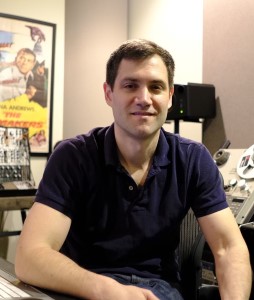
Larry Zipf (LZ): I started in November 2022, working à la carte on various scenes in the first episode. From there things progressed into a permanent role on the show.
From the beginning, Steve had clear ideas on how he wanted the show to sound, and his process helped me understand that vision. As opposed to tackling an entire episode, we spent significant time developing key scenes. I was able to learn what was important to him. Ambiences, in particular, were critical. Much of the show is sparse in terms of music and dialogue and as such, Steve was looking to build out Tom’s world through sound.
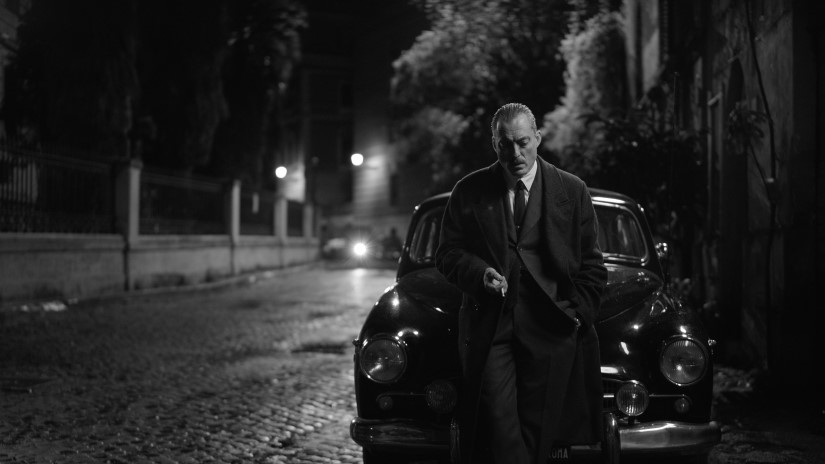
Can you talk more about setting the scene sonically? The show takes place in NYC and Italy in the 1950’s. What were some of your challenges in getting the world on screen to feel like the 50’s, especially in Italy?
LZ: We were definitely inspired by the beautiful locations and cinematography. The way that Steve and the Editors David O. Rogers and Joshua Raymond Lee cut the show left a lot of room for the ambiences to breathe. There’s just so much detail and thought in the composition of each frame. Steve wanted a similar approach to the sound. There was lots of attention to detail, but it was also concise and economical.
[ss_click_to_tweet tweet=”RIPLEY: Behind The Riveting Sound – with Larry Zipf, Michael Feuser, and Michael Barry” content=”RIPLEY: Behind The Riveting Sound – with Larry Zipf, Michael Feuser, and Michael Barry” style=”default”]
…the picture department sent me a folder of all the featured vehicles in the show recorded the same way we would have hoped to record them – multi-miked, mastered, and labeled.
One huge advantage for the scenes in Italy, especially for the urban areas, came from a large set of vehicle recordings I received from production sound mixer Maurizio Argentieri. He did an incredible job on set, and his production track is impeccable. In addition, during production, Steve had given him access to the majority of the period production vehicles. When I started working on the show, the picture department sent me a folder of all the featured vehicles in the show recorded the same way we would have hoped to record them – multi-miked, mastered, and labeled. They had various amounts of coverage, depending on how featured the vehicles were. That was an incredible resource because that’s not something we would have been able to come close to in terms of recording on our own. Anytime we had a vehicle on screen, we already had great material to work with.
Maurizio included a detailed spreadsheet that had photos showing all the miking. You could see all the original engines. I have not experienced that on another project before.
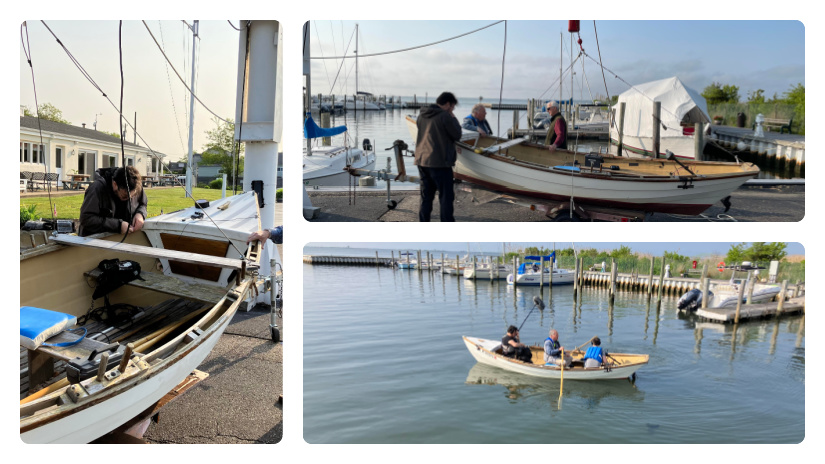

Michael Feuser (MF): The sound was incredibly well recorded and Maurizio took a lot of care about the period by recording the production sound with a tube amp, which added that harmonic richness.
The tracks were really pristine, but there were a couple of scenes that were a little more noisy, so before we got on the job, we cleaned those up to make sure we could, or to see if we needed to ADR any lines.
Steve was really into the mix track that he heard in the edit, so basically we were trying to provide Michael [Barry] with the tracks in the sense of how Steve was used to hearing them. We were just recreating that with the split tracks being aligned to each other. We had great coverage with the boom, and we used Auto Align Post to sync the boom and lavs to each other so Michael would be able to find that perfect balance between the mics and have it really sound natural.
Otherwise, we did as little as possible to the tracks because Steve was so into the sound of the mix track, which sounded really awesome.
6 sound facts about Ripley:
Q: Who did the sound design for Ripley?
A: The sound team at Warner Bros. Post Production Creative Services was led by sound supervisors Larry Zipf (also sound designer/re-recording mixer) and Michael Feuser (who won an MPSE Award for his dialogue editing on Succession), and re-recording mixer Michael Barry (who won an Emmy for mixing The Night Of – a series that was co-created by Ripley showrunner Steven Zaillian).
Q: Who composed the music for Ripley?
A: The music for Ripley was composed by Jeff Russo, who won a 2017 Emmy for his score on the Fargo series.
Q: What was one important sound the team recorded on-set of Ripley?
A: Production sound mixer Maurizio Argentieri methodically recorded the majority of the period production vehicles using a multi-mic approach. He then mastered and labeled all the recordings and delivered those to the post-production team for use in the show.
Q: Who handled the foley on Ripley?
A: The foley on Ripley was done by MPSE Award-winning foley artist Jay Peck (known for his foley work on Alfonso Cuarón’s Roma), foley supervisor Matthew Haasch, and foley mixer Matthew Kay, with additional help from Andy Malcolm (Foley artist), Kevin Schultz (Foley mixer), Kevin Jung (Foley recordist), Jenna Dalla Riva (Foley recordist), and Colton Maddigan (foley recordist).
Q: What’s the most surprising story behind the sound of Ripley?
A: Since Ripley unfolds in different parts of Italy, Lidia Tamplenizza (an Italian-speaking Sound Supervisor and Re-Recording Mixer) was sent to Kea Sound in Rome to record different dialects of Italian-language speaking loop groups: Romans, Neapolitans, Sicilians, Venetians, and Ligurians.
Q: What was the most challenging aspect of the sound on Ripley?
A: The dialogue and music in Ripley are fairly sparse, so the sound team built rich ambiences for Tom’s world that were appropriate for Italy in the ’50s; the recordings of the cars on set and the dialect-specific loop group were key backgrounds elements. Foley and the breath tracks were also crucial elements, helping to build tension and drawing the audience into Tom’s experience.
LZ: One initial challenge I had was finding enough Italian voices to play off-screen. We scraped together as much as we could from various libraries and other show recordings, but I was looking forward to eventually having group recorded to fill out and diversify all the voices, to help make up some of the texture of Italy. We finally got those recorded in July of 2023. The production sent Lidia Tamplenizza (an Italian-speaking Sound Supervisor and Re-Recording Mixer who works with us here at Warner Bros. in New York) to Rome for a week, to work at a fantastic facility called Kea Sound. She recorded tons of loop group and we used that all over the show to great effect.
Lidia cued all the group based on dialect. They did a group of Romans, Neapolitans, Sicilians, Venetians, and Ligurians. Everyone did a wonderful job and it was such a pleasure to have all of that to work with.
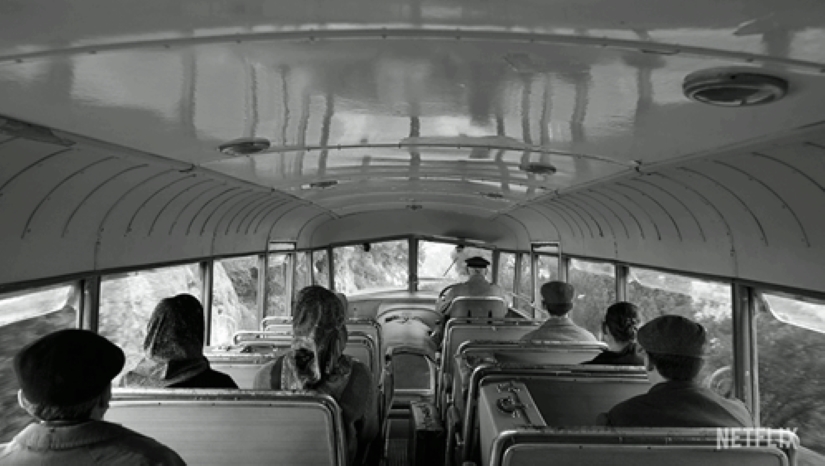
That’s fantastic that you got production vehicle recordings (and photos showing mic placements!) from the sound mixer. Some of those vehicles had so much personality, like the bus…
One of the primary sounds when we’re onboard the bus is a 5.0 array that Maurizio had set up inside.
LZ: The bus is incredible. It has a very distinctive exhaust note. One of the primary sounds when we’re onboard the bus is a 5.0 array that Maurizio had set up inside. 80% of the track inside the bus is that recording. He recorded two long takes onboard as it was driving around, in addition to several exterior pass-bys, ins, and aways.
Maurizio did a wonderful job recording it, but all credit to Steve for having the foresight to make arrangements for that during production. And it wasn’t just two vehicles; it was about 18 or so.
Michael Barry (MB): We can’t stress enough how involved Steve was in the entire world he created. He wasn’t just the showrunner; he was the writer, director, and producer as well. He paid attention to every frame, every footstep, every bird. He was really engaged and gave us the time to achieve the goals he had in mind, which is awesome. I can’t recommend that enough to other shows, which unfortunately don’t live up to the same standard.
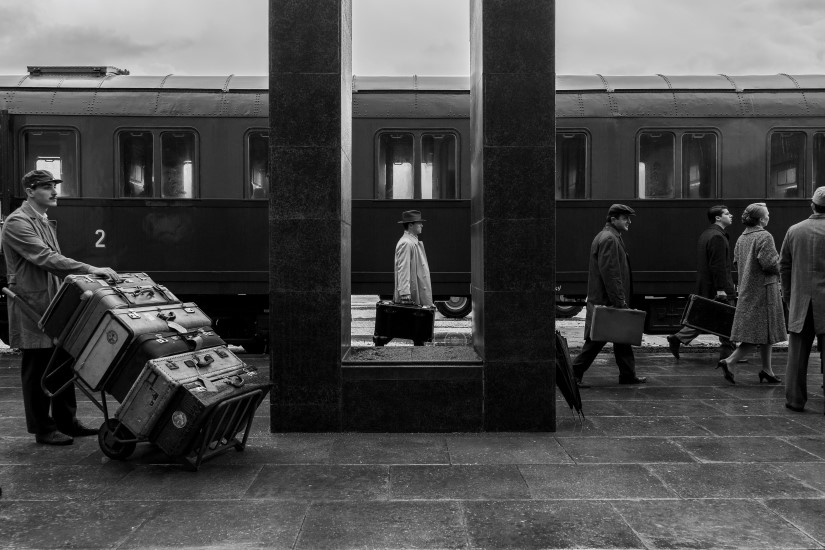
You mentioned composing the backgrounds and being very specific about the sounds that were in there. Since the show is in black and white, did you find that affected your choices for sound? Since things aren’t popping out in terms of color, did you find yourself using sounds to help make things stand out in the black-and-white environment?
LZ: I don’t know if I thought of it in those terms exactly, but I will say that I did get a lot of inspiration from the black-and-white world of the cinematography.
There’s a lot of contrast and dramatic lighting in the black-and-white image, so we would try to create similar contrast or support that in some way if we could with the track.
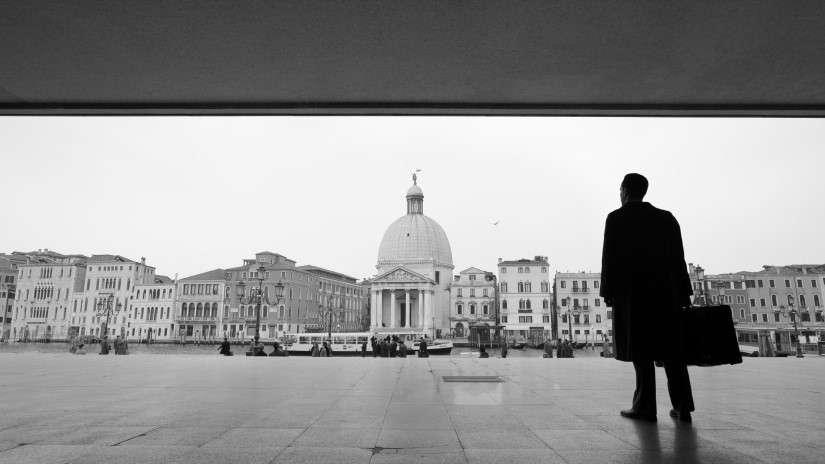
I love the subjective use of sound to give voice to contentious objects in the show – for instance, in Florence, when Marge is in Tom’s room, you hear Richard’s suitcase lurking there under the bed. Can you talk about your subjective use of sound throughout the show and choosing when to give objects subjective sound design?
LZ: Over the course of working on the show, we developed a sense of the places where Steve might be interested in trying something like that. Also, Steve mapped out where much of that could go in the picture edit. Steve and the editors Josh and Dave were incredibly meticulous about their track in the Avid. That was always our number one guide.
…you often feel a sense that he’s being watched or judged – by the boat or the elevator or the cat.
The show is sparsely populated at times, and there are some long stretches where we are just with Tom. He’s this solitary figure, and you often feel a sense that he’s being watched or judged – by the boat or the elevator or the cat. We did whatever we could when appropriate to create this sense that Tom is always being observed or feels like he’s being observed. There’s a steady low-level paranoia throughout. The visual framing is very suggestive of that.
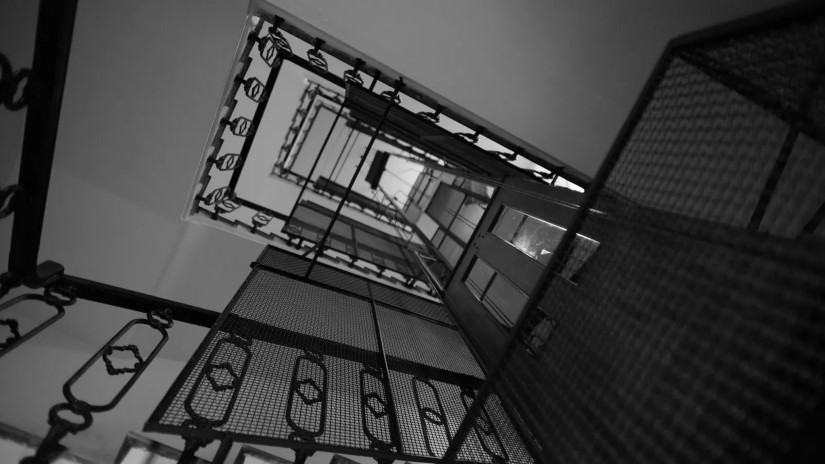
Yes! The elevator was another object that had fantastic subjective sound design. What went into the voice of the elevator?
LZ: The elevator primarily came from sound designer, Angelo Palazzo, who worked with Steve before I got started. Right after they had wrapped shooting, Steve went back to L. A. and they started editing Ep. 5. That episode (and the elevator in particular) was something that Angelo and Steve worked on for a month or so. Angelo did amazing work, bringing that whole elevator to life. When I started the show and eventually got to Ep. 5, I inherited all of his brilliant work there.
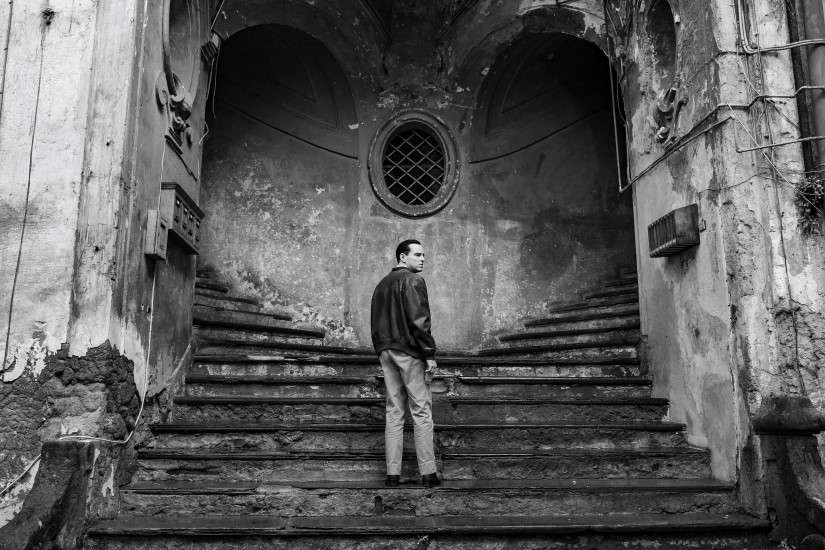
On the mix side, were there IRs from that specific elevator stairwell, or was that something you developed in post?
LZ: There weren’t, but we had some fun with that.
One idea for the stairwell/elevator shaft was that other people live in these apartment buildings, so as the elevator passes their floors, occasionally you can hear them. Or, if you’re up in Tom’s apartment, you can occasionally hear neighbors off-stage – you can hear their voices or movements as they come and go.
We have a very live concrete stairwell here at Warner’s in New York, so dialogue editor Michael McMenomy and I took some of the loop group that had been recorded for that apartment building and worldized it in our stairwell. That made it easy to grab pieces later on because they just fit in naturally. I mean we could have done some of that with plugins but what’s the fun in that.
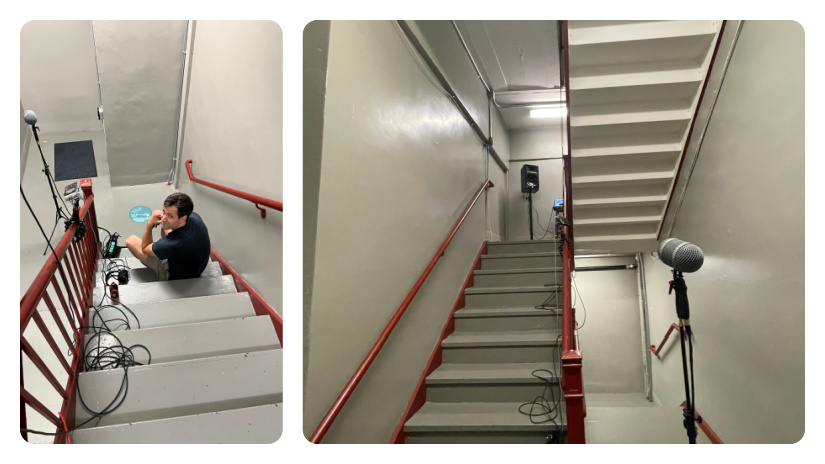
…I took some of the loop group that had been recorded for that apartment building and worldized it in our stairwell.
Similarly, we recorded footsteps and door activity in the stairwell, which was a great resource for generalized off-stage sounds. Some of that is featured in Ep. 6, when Inspector Ravini and the other officer are coming to see Tom. After Tom receives a call from the landlady that they’re on their way up, you can hear Ravini and this other officer coming up several flights of stairs. We used those recordings for the majority of that, and I think they credibly kept up the tension of their off-screen approach.
 Tesla Model X 2015 electric full size crossover SUV sport utility vehicleKrampfstadt Studio65,00 $0,00 $100% OFF
Tesla Model X 2015 electric full size crossover SUV sport utility vehicleKrampfstadt Studio65,00 $0,00 $100% OFF
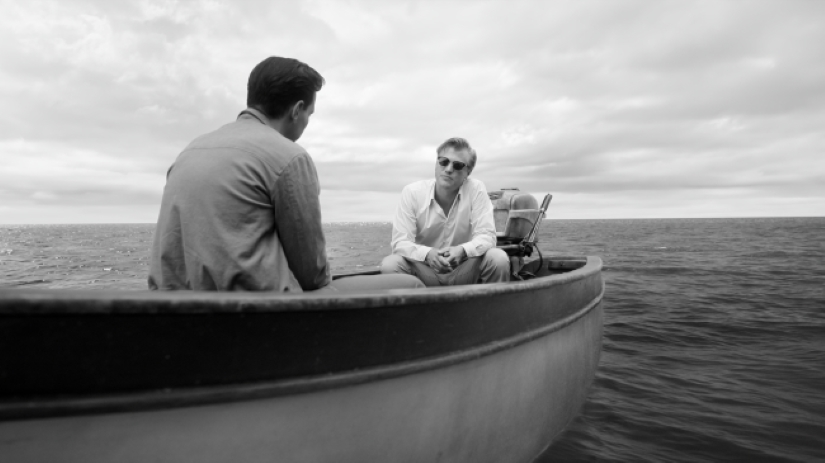
The death of Richard in Ep. 3 was a great sequence for sound – the lead-up to his death, Tom’s struggles in the water, and then on the shore as Tom makes a plan for what to do with the boat. Can you walk me through your approach to sound for this episode?
MB: That episode took the longest of any to get to the finish line and was the last one we finally put the finishing touches on. That goes for the picture portion, too. They had to do a lot of special effects in that area to accomplish Steve’s vision, and it took a very long time.
LZ: To Michael’s point, that scene was not shot in the ocean but in a tank. It was a huge challenge, but ultimately very rewarding.
Initially, the main thing we tried to do was just maintain interest and tension, because you’re with Tom for a long time. After that great, tense scene between Tom and Dickie, you have the murder and then there’s maybe 12 minutes where you’re just alone with Tom in this boat as he tries to figure out his next steps. It’s about 18 minutes long if you include the next scene at the cove afterwards.
We played through the scene to figure out where the perspectives were working and where they were distracting, making more choices from there.
We tried to create as much contrast as we could between shots. We had a great palette of sounds to work with between the wood creaking and the lapping water, distant thunder from the stormy skies, as well as some more abstract low-end wood groans (“boat voice,” as we called it). We played through the scene to figure out where the perspectives were working and where they were distracting, making more choices from there. It was a scene that took many iterations to develop.
It was also exciting to see the visual effects progress. A lot of it came together late in the process and it was both satisfying and rewarding to see it develop and give us more for the sound to stick to.
MB: One of the most special things about that whole sequence is the lack of music. And that was an intentional choice that Steve made. Larry had to create the environment with enough interest so that the music wasn’t necessary.
LZ: That was a bold choice – and we were given the time to work with Steve, to figure it out and make it work. It took a while to get this scene to come together and we’re glad we had the time to do it.
MB: Usually the music is what the audience reacts to in moments of tension, but we found ways to do it with sound.
LZ: In the boat, there aren’t that many different perspectives. You have a couple angles of a close-up of the bow, and on the stern of the boat. Occasionally, there’s a low angle from the bottom of the boat where Dickie is lying, and we hear more of the water slosh beneath the floorboards or in the pair of gas cans.
Usually the music is what the audience reacts to in moments of tension, but we found ways to do it with sound.
When we’re behind the stern, we feature more of the metallic sounds of the engine creaking and the hot engine ticks. On the bow, we featured more of the wood groans and creaks. We always tried to make some kind of change in the lapping water between these shots. Occasionally, we cut to a medium or wide out in the ocean and that would give us a chance to reset, to get away from some of those close, present sounds for a moment, and then have more contrast when we cut back into the boat. We tried to maximize the contrast between those points of view.
Some of the ADR breaths and efforts from Tom that Misha [Feuser] cut and Michael mixed I’m sure were challenging to make work but that was essential to keeping us with Tom.
MB: You really get the sense that Tom is figuring it out as he goes; he didn’t have a plan in advance. He just has to come up with a way to get out of this particular situation.
MF: In addition to those breaths on the boat, we had efforts and breaths in Ep. 5 for when Tom tries to get rid of Freddie. We did a good amount of loop for efforts. There were not too many lines that we needed to ADR because Steve was attached to production and we were able to clean up most of the more challenging scenes, but we recorded a lot of ADR for efforts.
I remember that during the mix every sigh, every breath was scrutinized. Steve was so focused on everything. When it came to the efforts, sometimes we changed a sigh from just being a sigh to something that conveyed the slightest bit of disgust or revulsion, and it changed that particular scene, which was really amazing.
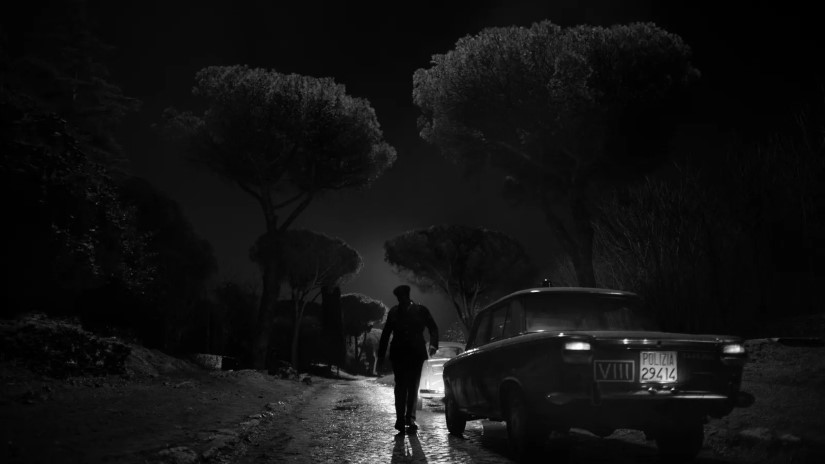
All those breaths and efforts really sold the fact that he’s moving a body and it’s quite challenging, whether that was pushing Dickie out of the boat or trying to get Freddie out of the apartment and into the car…
MF: It was a lot of fun. For the recording sessions on Ep. 3, the ADR mixer just let it roll and had Andrew Scott (who played Tom Ripley) chase himself. We ended up recording an 18-minute take for that episode, which was pretty remarkable. And Andrew was game. It was really a lot of fun having him in the studio.
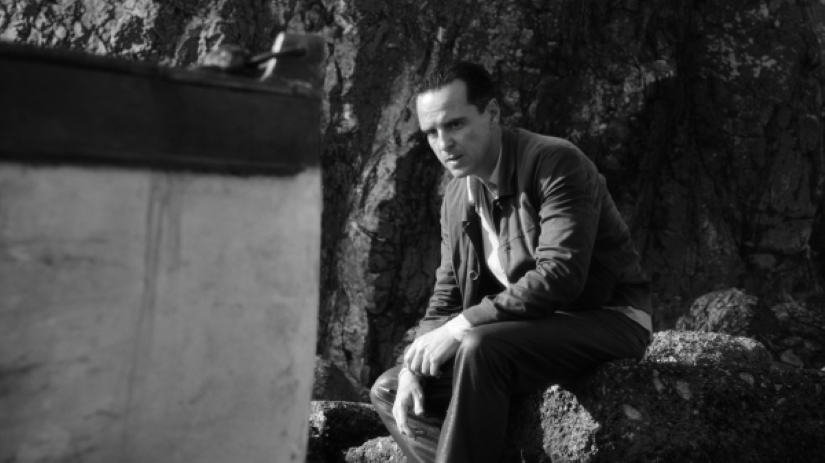
Going back to the boat in the cove; that was another great opportunity for subjective sound. When Tom is on shore, the boat is speaking to him, reminding him that he has to take care of it somehow…
MB: A lot of that was Steve not giving up until he found the notes he wanted to play in the scene. Larry hung in there and created a great character out of that boat. It took a long time, a lot of trial and error.
LZ: In terms of elements, there were many pitched wood groans with a bit of synthesized material snuck in there as another layer. There were also some more percussive low, slower creaks.
In terms of elements, there were many pitched wood groans with a bit of synthesized material snuck in there as another layer.
On the picture side, we really benefited from the first shot of Tom and Dickie as they are idling in. It’s a great close-up of the bow that’s very dramatic and shot from a low angle. That gave us an opportunity to establish this big groaning sound for the boat, which we could use more subtly throughout, without it just appearing out of nowhere. It was key to the boat in the cove as well.
We also had help from legendary sound effects recordist Eric Potter. He tracked down a 1950s or early ’60s two-stroke outboard boat engine for us. He befriended some members of a 50s – 60s outboard engine enthusiasts club – he’s amazing at that– and got a bunch of great engine recordings for us to use.
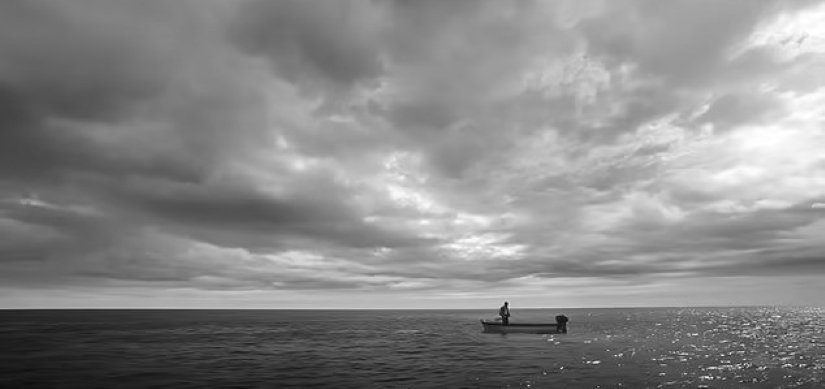
What about the underwater scenes? Did you pull the underwater sounds from library or did you end up recording your own underwater sounds?
LZ: It was primarily library effects. Eric also applied a hydrophone to the onboard rig of the boat he recorded. Much of that ended up being clipped, but there were a few great bits we did use. It was nice to have recordings of the real thing, but most of the underwater material was more or less constructed from library pieces and mixing.
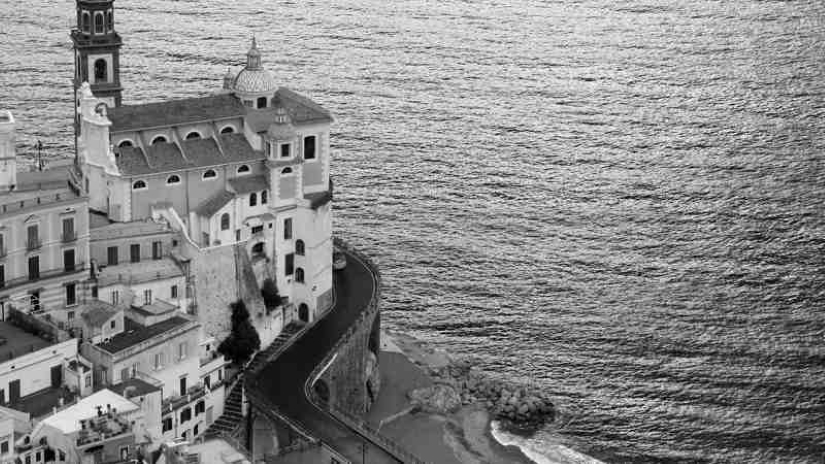
What was the most challenging episode overall?
MF: Any of the episodes or scenes that were in Atrani needed a bit more work regarding the dialogue edit. The house was next to a harbor and so there were some obvious modern sounds that Steve didn’t want to be in the show. There was some editing effort needed to get those scenes clean but at the same time to keep them from sounding artificial. Michael McMenomy, our dialogue editor, did a fantastic job of achieving that balance.
MB: My job was made easier because of the work that Larry and Misha [Feuser] and the set recordist did. I just tried to stay out of the way. It was something I’d never really experienced in that way before. It was a pleasure.
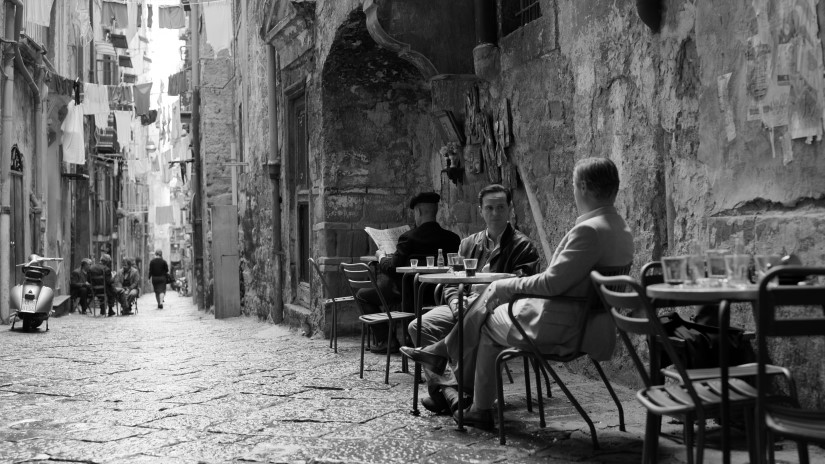
What was unique about your experience of working on the sound of Ripley?
LZ: This was my first time working with Steve. I learned a great deal from him. His precision – how deliberate he was with every element, and the amount of care he put into every moment – was something really unique to his filmmaking and this show in particular. When it’s all over, all that care in those moments adds up to something really special.
Compared to a more traditional television schedule, this was significantly longer, more akin to an 8-hour feature.
The time we were given was also unique. Compared to a more traditional television schedule, this was significantly longer, more akin to an 8-hour feature. I worked for about 16 months continuously – from the start of the show to finishing it – which is double the amount of time I have devoted continuously to any other single project. That was a huge advantage.
There were a lot of things that came together. All of the performances are so strong. Andrew Scott, who has to carry the show, is particularly incredible. The cinematography was another constant source of inspiration. While working, you could just hit stop during any scene and look up and you’re parked on some frame that could stand on its own as fine art still photography. Steve’s incredible care and work ethic were inspiring.
MB: It’s not often enough that we’re given the time to give the show all the attention and detail it needs.
MF: Yeah, I definitely agree with Larry. That was my impression, to have the attention and to be challenged all the time was really rewarding in the end. You had to be on your feet. You needed to find solutions. But Steve gave us the time and gave us the space to do that. This was a great collaboration. He shepherded us through and you felt very respected. You could put in your work and were rewarded.
MB: I agree totally.
A big thanks to Larry Zipf, Michael Feuser, and Michael Barry for giving us a behind-the-scenes look at the sound of Ripley and to Jennifer Walden for the interview!
 Tesla Model X 2015 electric full size crossover SUV sport utility vehicleKrampfstadt Studio65,00 $0,00 $100% OFF
Tesla Model X 2015 electric full size crossover SUV sport utility vehicleKrampfstadt Studio65,00 $0,00 $100% OFF

